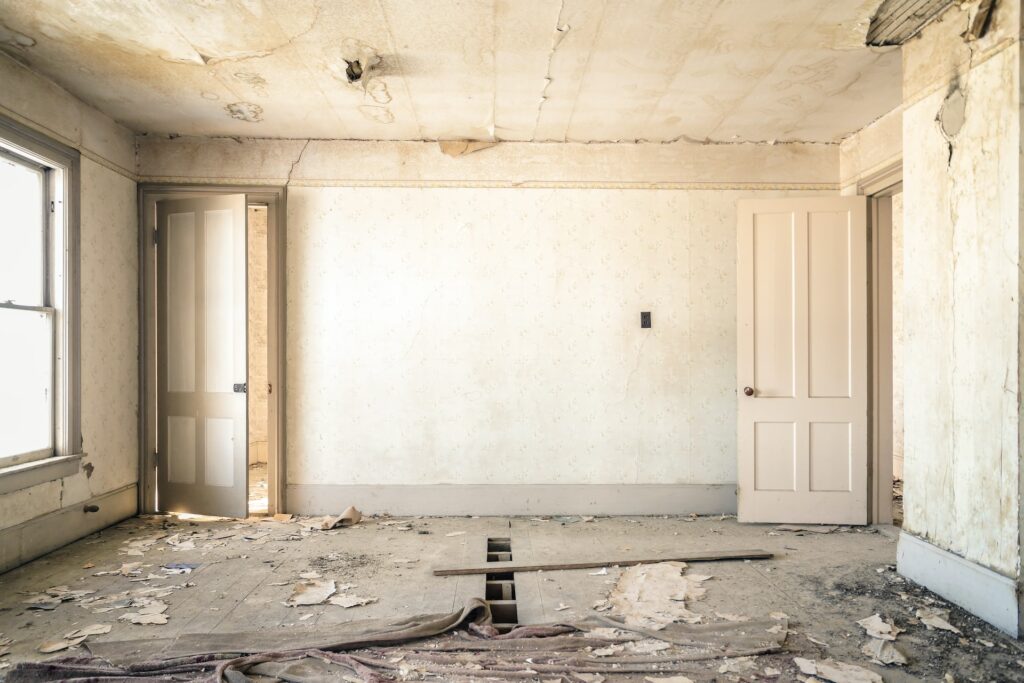施工会社と資産区分 – Construction Company and Asset Classification
Construction Management – A工事、B工事、C工事というのは何となく聞いた事があっても、不動産にあまり関わらない方は、実際良く分からない方が多いのではと思います。この工事区分の表現は日本独特のようですが、責任区分や資産区分の考え方としては汎用性のあるものです。
A工事は、オーナーがオーナーの費用負担で実施する工事です。ビルの共用設備が老朽化したのでオーナーで更新する工事はA工事です。
B工事は、テナントの費用負担工事ですが、工事会社がオーナー指定になります。例えばテナント内部の工事であっても、防災関係や空調・電気工事は、少なからず他テナントやビル全体への波及リスクがあるので、オーナーからテナントに、ビルの事を熟知する工事会社を指定します。
C工事は、A工事でもB工事でもない工事です。具体的には、テナントがテナント内部の造作工事に、テナントと付き合いのある内装会社を連れてきてテナント負担で実施するといった工事です。
A工事の費用負担はオーナー、B・C工事の費用負担はテナント(入居者)なので、A工事による資産はオーナー、B・C工事による資産はテナントにより計上されます。
A工事はオーナーに工事資料が残るため履歴を管理しやすいのですが、テナントは移り変わるため、B・C工事の履歴管理は少しハードルが上がります。B工事はオーナー指定の工事会社による実施ですので、工事会社に問い合わせる事も出来るかも知れませんが、C工事は主にテナントの協力会社や関連会社ですので、場合によってはオーナーは会社名さえ分からないといった状況も起こり得ます。
よくある話として、テナントが内装工事を目的に天井を一部剥がした所、使途不明な配線が表出するという事があります。切断によるビル全体への障害を回避したいため、この配線は何かとオーナーに問い合わせるのですが、オーナーに工事履歴がなければ、工事会社にヒアリングしなければ分かりません。B工事で実施していたものであれば、オーナーから工事会社にヒアリングも出来ますが、C工事で実施していたもの(例えばテレビ共聴設備や有線、LAN配線など)は、ビル全体設備なのか、前のテナントが残した設備なのか、誰も分かりません。
工事履歴管理の重要性 – Importance of construction history management
上記のような不幸を避けるために、工事履歴を残す事は大変重要です。
A工事は工事計画、見積もり、図面、工事報告書などが自動的にオーナーに残っていきます(いくはずです)。それらを一元的に管理する事が重要となります。
B・C工事はテナント発注ですので、上記の資料がテナントに残る事になりますが、オーナーは、どのような工事を実施するのか(したのか)、必ずテナントから情報を取得し、保管しておく必要があります。
多くのオフィスビルではオーナーがテナントの工事を承認するスキームとなっていると思います。例えC工事と言えども、工事関係者の立入り、工事材料の搬入、産業廃棄物の搬出、騒音や臭気の発生、臨時警備(立哨)の有無など、他のテナントに影響を与える事は少なくなく、オーナーは、テナントが確りとした工事計画を立てているか予め確認し、問題ないと思われれば承認をします。
通常はこの承認事項について、賃貸借契約に明記されますので、テナントにこれを正しく履行して貰うという事になります。
原状回復工事との関連 – Related to restoration work
B工事、C工事はテナント資産となり、原状回復義務を負うものです。テナントが退去する際には、綺麗サッパリ撤去する必要があります。原状回復工事が完了した際にはオーナーが確認するのが一般的ですが、その際に、予め提出されたB工事やC工事の工事計画書が役に立ちます。A工事(A状態)は「原状」を示しておりB工事、C工事の結果が「現状」です。原状回復工事はB工事、C工事で実施した事を原状まで「巻き戻す」工事なので、
(1)B工事やC工事で設置されたものが確実に撤去されているか。
(2)A工事(A状態)と等しいか。
の両側の目線で原状回復工事の完了確認が可能となります。
なお、(2)のA状態を記載したものは、一般には「貸方基準」と呼ばれます。
ビルではA工事、B工事、C工事が錯綜する事もあります。また、オーナー側の戦略により、B工事やC工事の原状回復義務を免除するようなケースも出てきます。これはまた別途書きたいと思いますが、先ずは、工事履歴を確実に保管する(出来れば適切に「管理」する)事により、常日頃から資産と責任区分の管理を適切にしておく事が重要です。

Construction Company and Asset Classification
Construction Management – Many people have heard of “A construction,” “B construction,” and “C construction,” but those who are not involved in real estate may not really understand them. This expression of construction classification seems to be unique to Japan, but it is a versatile way of thinking about liability classification and asset classification.
Construction work A is construction work performed by the owner at the owner’s expense. Construction work to be renewed by the owner because the common facilities in the building have become obsolete is A construction work.
Work B is work to be performed at the tenant’s expense, but the construction company is designated by the owner. For example, even for internal tenant work, fire prevention, air-conditioning, and electrical work may have a risk of spreading to other tenants and the building as a whole, so the owner will assign a construction company to the tenant that is familiar with the building.
C work is work that is neither A work nor B work. Specifically, the tenant brings in an interior decoration company that has a relationship with the tenant to do the work inside the tenant’s building at the tenant’s expense.
The owner bears the cost of the A work and the tenant bears the cost of the B and C work, so the assets from the A work are recorded by the owner and the assets from the B and C work are recorded by the tenant.
The owner can easily manage the history of the A work because the construction documents remain with the owner, but because tenants change, the history of the B and C work is a little more difficult to manage. However, since C work is mainly done by the tenant’s subcontractors or affiliated companies, in some cases, the owner may not even know the name of the company.
A common occurrence is that when a tenant removes a portion of the ceiling for interior work, unused wiring is revealed. If the owner does not have the construction history, he or she will not know without interviewing the construction company. However, if the wiring was done as part of C work (e.g., TV common listening system, wiring, LAN wiring, etc.), no one knows whether it is a building-wide facility or a facility left behind by the previous tenant.
Importance of construction history management
To avoid the above misfortunes, it is very important to keep a construction history.
A construction project will (and should) automatically leave construction plans, estimates, drawings, and construction reports with the owner. It is important to manage them centrally.
Since B and C work is ordered by tenants, the above documents will remain with the tenants, but the owner must obtain and keep information from the tenants on what kind of work is being done (or has been done).
In many office buildings, I believe the scheme is that the owner approves the tenant’s construction work. Even if it is C construction, there are many things that may affect other tenants, such as entry of construction workers, delivery of construction materials, removal of industrial waste, generation of noise and odor, and presence of temporary security (sentinel). If there is no problem, the owner will give approval.
Usually, this approval is clearly stated in the lease agreement, and the tenant is expected to properly carry out the agreement.
Related to restoration work
Construction B and C are tenant assets and are obligated to restore the property to its original condition. When a tenant vacates the property, it must be removed cleanly and completely. When the restoration work is completed, the owner generally checks the work plan for B and C work submitted in advance, which is helpful. A work (A condition) indicates the “original condition” and the result of B and C work is the “current condition. Since the restoration work is to “roll back” to the original state what was done in the B and C work, it is necessary to
(1) Are the items installed in the B and C construction works removed without fail?
(2) Is it equal to the A work (A condition)?
Note that (2) describing the A condition is generally referred to as the “credit standard”.
In a building, A construction, B construction, and C construction can be complicated. In addition, depending on the owner’s strategy, there may be cases where the B and C construction work is exempted from the obligation to restore the building to its original condition. I would like to write about this separately, but first of all, it is important to properly manage assets and liability classifications on a regular basis by ensuring that the construction history is kept (and if possible, properly “managed”).
